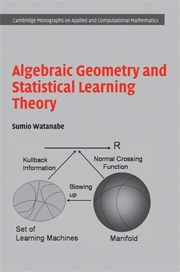Refine search
Actions for selected content:
2584 results in Computational Science
12 - Linear model for the sea breeze
-
-
- Book:
- Factor Separation in the Atmosphere
- Published online:
- 03 May 2011
- Print publication:
- 10 February 2011, pp 184-195
-
- Chapter
- Export citation
References
-
- Book:
- Factor Separation in the Atmosphere
- Published online:
- 03 May 2011
- Print publication:
- 10 February 2011, pp 254-271
-
- Chapter
- Export citation
10 - Application of the Factor Separation Methodology to quantify the effect of waste heat, vapor and pollution on cumulus convection
-
-
- Book:
- Factor Separation in the Atmosphere
- Published online:
- 03 May 2011
- Print publication:
- 10 February 2011, pp 163-170
-
- Chapter
- Export citation
5 - Meso-meteorology: Factor Separation examples in atmospheric meso-scale motions
-
-
- Book:
- Factor Separation in the Atmosphere
- Published online:
- 03 May 2011
- Print publication:
- 10 February 2011, pp 53-66
-
- Chapter
- Export citation
Frontmatter
-
- Book:
- Factor Separation in the Atmosphere
- Published online:
- 03 May 2011
- Print publication:
- 10 February 2011, pp i-iv
-
- Chapter
- Export citation
3 - Investigation of the Factor Separation features for basic mathematical functions
-
-
- Book:
- Factor Separation in the Atmosphere
- Published online:
- 03 May 2011
- Print publication:
- 10 February 2011, pp 11-27
-
- Chapter
- Export citation
Degenerations and limit Frobenius structures in rigid cohomology
- Part of
-
- Journal:
- LMS Journal of Computation and Mathematics / Volume 14 / 2011
- Published online by Cambridge University Press:
- 01 February 2011, pp. 1-33
-
- Article
-
- You have access
- Export citation
Growth in Baumslag–Solitar groups I: subgroups and rationality
- Part of
-
- Journal:
- LMS Journal of Computation and Mathematics / Volume 14 / 2011
- Published online by Cambridge University Press:
- 01 February 2011, pp. 34-71
-
- Article
-
- You have access
- Export citation
Discovering bipartite substructure in directed networks
- Part of
-
- Journal:
- LMS Journal of Computation and Mathematics / Volume 14 / 2011
- Published online by Cambridge University Press:
- 01 February 2011, pp. 72-86
-
- Article
-
- You have access
- Export citation

Algebraic Geometry and Statistical Learning Theory
-
- Published online:
- 10 January 2011
- Print publication:
- 13 August 2009
Riemannian median and its estimation
- Part of
-
- Journal:
- LMS Journal of Computation and Mathematics / Volume 13 / January 2010
- Published online by Cambridge University Press:
- 01 December 2010, pp. 461-479
-
- Article
-
- You have access
- Export citation
References
-
- Book:
- Modern Computer Arithmetic
- Published online:
- 05 August 2012
- Print publication:
- 25 November 2010, pp 191-206
-
- Chapter
- Export citation
3 - Floating-point arithmetic
-
- Book:
- Modern Computer Arithmetic
- Published online:
- 05 August 2012
- Print publication:
- 25 November 2010, pp 79-124
-
- Chapter
- Export citation
5 - Implementations and pointers
-
- Book:
- Modern Computer Arithmetic
- Published online:
- 05 August 2012
- Print publication:
- 25 November 2010, pp 185-190
-
- Chapter
- Export citation
Frontmatter
-
- Book:
- Modern Computer Arithmetic
- Published online:
- 05 August 2012
- Print publication:
- 25 November 2010, pp i-iv
-
- Chapter
- Export citation
Acknowledgements
-
- Book:
- Modern Computer Arithmetic
- Published online:
- 05 August 2012
- Print publication:
- 25 November 2010, pp xi-xii
-
- Chapter
- Export citation
Preface
-
- Book:
- Modern Computer Arithmetic
- Published online:
- 05 August 2012
- Print publication:
- 25 November 2010, pp ix-x
-
- Chapter
- Export citation
Index
-
- Book:
- Modern Computer Arithmetic
- Published online:
- 05 August 2012
- Print publication:
- 25 November 2010, pp 207-221
-
- Chapter
- Export citation
Contents
-
- Book:
- Modern Computer Arithmetic
- Published online:
- 05 August 2012
- Print publication:
- 25 November 2010, pp v-viii
-
- Chapter
- Export citation
1 - Integer arithmetic
-
- Book:
- Modern Computer Arithmetic
- Published online:
- 05 August 2012
- Print publication:
- 25 November 2010, pp 1-46
-
- Chapter
- Export citation
